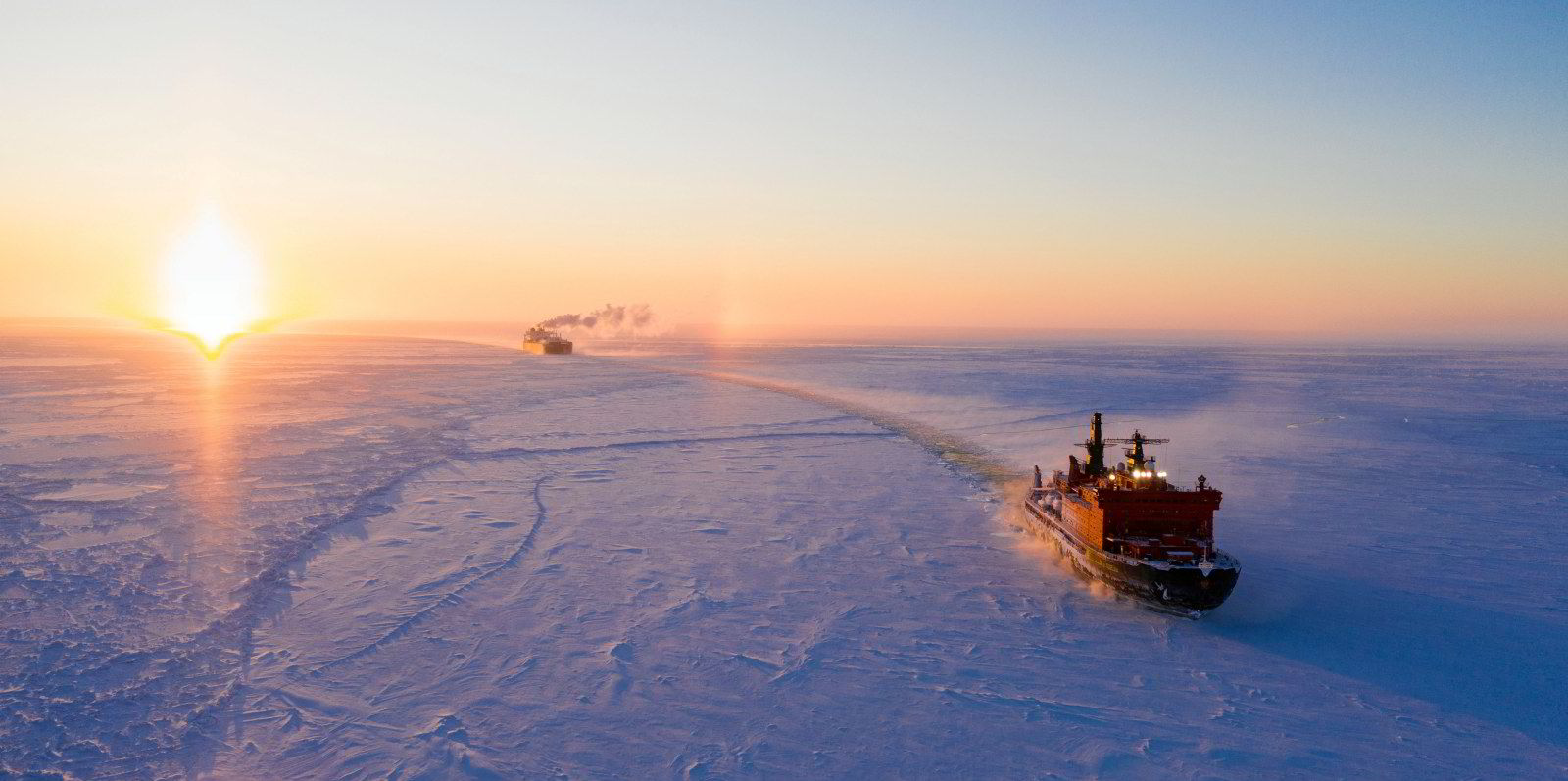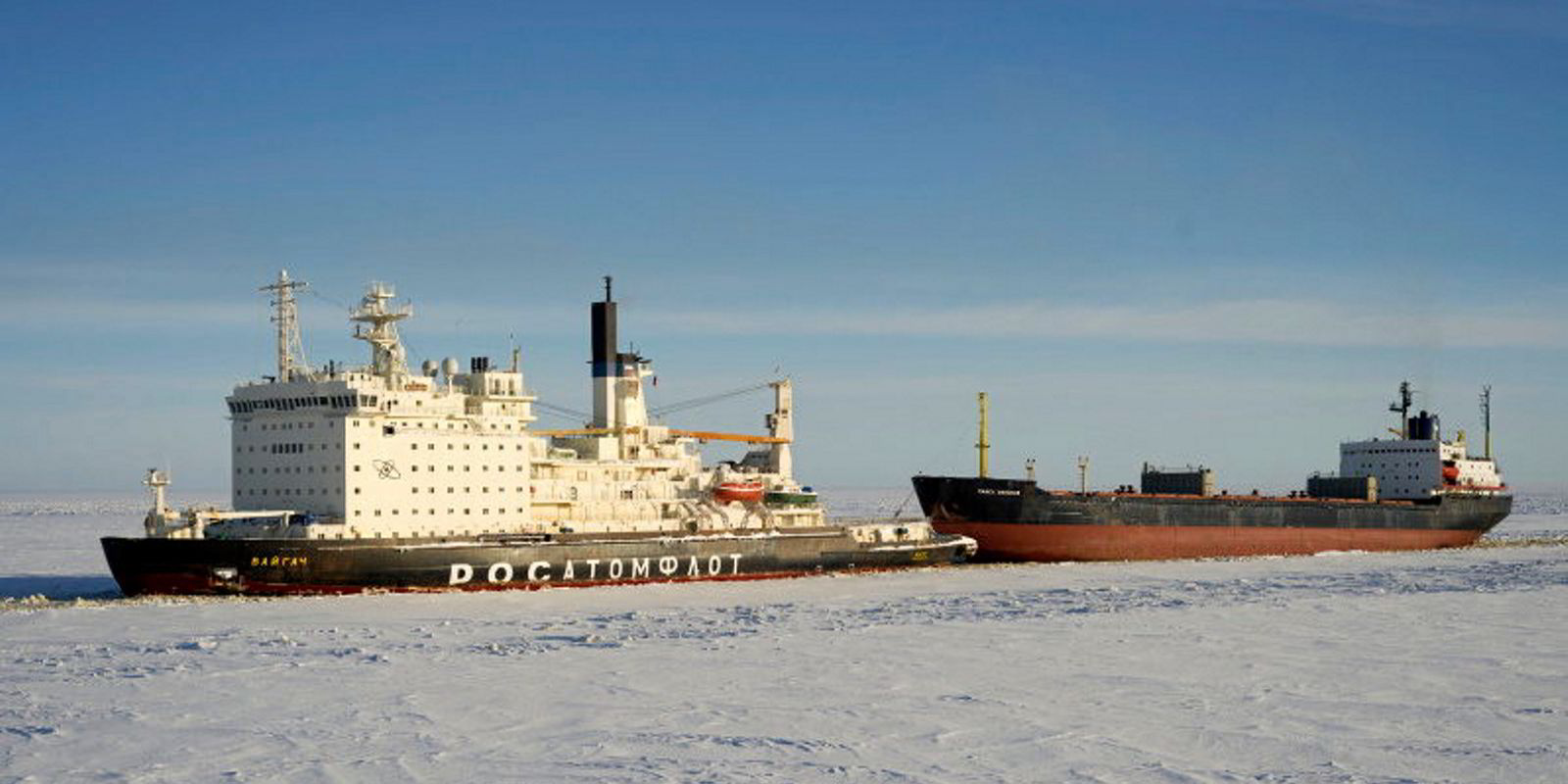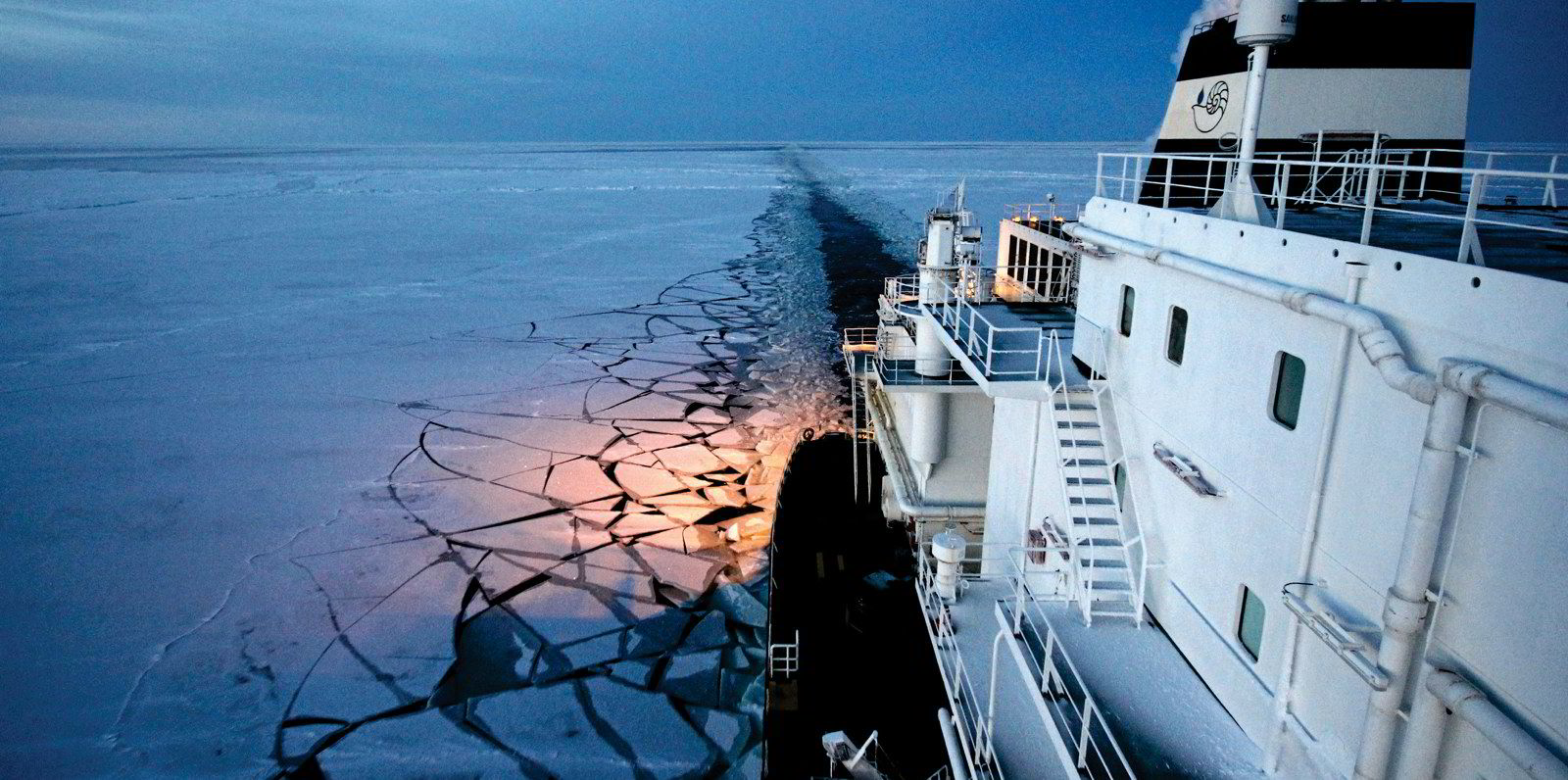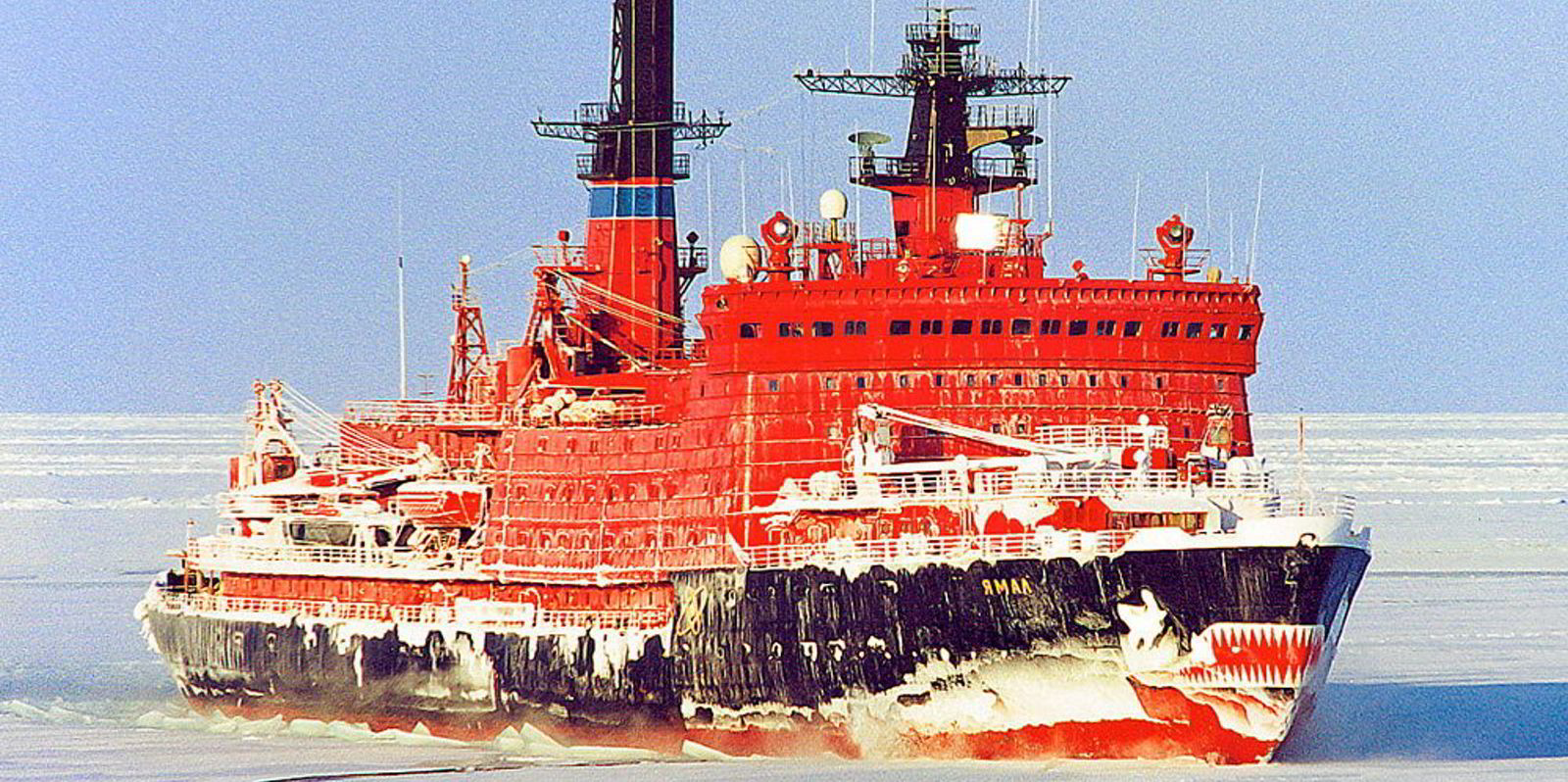More than 20 vessels have been stuck and delayed in the Arctic waters of the Northern Sea Route (NSR) after ice blocked channels earlier than expected and they needed to wait for ice-breaker assistance.
Nord University's Center for High North Logistics (CHNL) named 17 of the ships, including the bulk carriers the 74,300-dwt Golden Suek (built 2011) and Golden Pearl (built 2013), 56,348-dwt Kumpula (built 2012) and 95,758-dwt newbuildings Nordic Qinngua and Nordic Nuluujaak, plus the 17,259-dwt tanker Vladimir Rusanov (built 1994).
The vessels were moved with the assistance of two nuclear-powered ice-breakers, the 20,791-gt Vaygach (built 1990) in the east and the 20,646-gt Yamal (built 1992) in the west.
Some vessel trackers described a slow-moving convoy of ships. The so-called Northern Delivery, which brings in supplies for local communities, is being escorted on the pack ice border off the Novosibirsk Islands by the Vaygach.
Other vessels in the vicinity are stopped and several are moored up at Pevek seaport.
Ice-breaking power
The 172,600-cbm ice-breaking Arc7 LNG carrier Boris Davydov (built 2018) has also been reported as assisting the 133-loa scientific vessel Mikhail Somov (built 1975) after it became stuck in ice.
In contrast, the Arc7 LNG vessels are still moving westbound through the NSR to Yamal LNG's Sabetta terminal at between 10 and 14 knots, sources said.
Russian observers said many vessels missed the sailing window for the NSR this year before the ice closed in, leaving them stuck.
The CHNL said that while no vessel was left without assistance, "it is obvious that one icebreaker alone, even if employed in a logical and effective way, cannot handle such a situation without delays".
It described the need to wait for assistance towards the end of the NSR sailing season as risky and said it confirms the need for sufficient ice-breakers.
"Despite the general trend of global warming, the Arctic is still the Arctic, with changing ice and weather patterns from year to year."
CHNL said the strandings were partly due to the "very late delivery of goods" to Pevek.
Winter trends
Reports in the domestic press blamed poor weather forecasting, and questions are being raised about vessels with no or low ice-class using the Arctic route late in the season as Russia pushes ahead with plans to open the NSR up to year-round navigation.
According to the Barents Observer, an ice layer 30 centimetres thick had already formed across most of the Laptev Sea and East Siberian Sea by late October. In previous years, the NSR has experienced increasingly light ice conditions.
Russian shipping observers pointed out that there is a shortage of ice-breakers for the region, and although newbuildings are on order, these will take some time to come into operation.
Other signs of a change to winter activity have been seen in the region.
Eikland Energy data service iGIS/LNG records that the first ship-to-ship LNG cargo transfer of the season has taken place off Russia's Kildin Island between the 172,600-cbm Vladimir Voronin (built 2019) and the 161,900-cbm Clean Ocean (built 2014).
The service observes that NSR ice is already thick in places, with some Arc7s apparently taking alternative routings.









